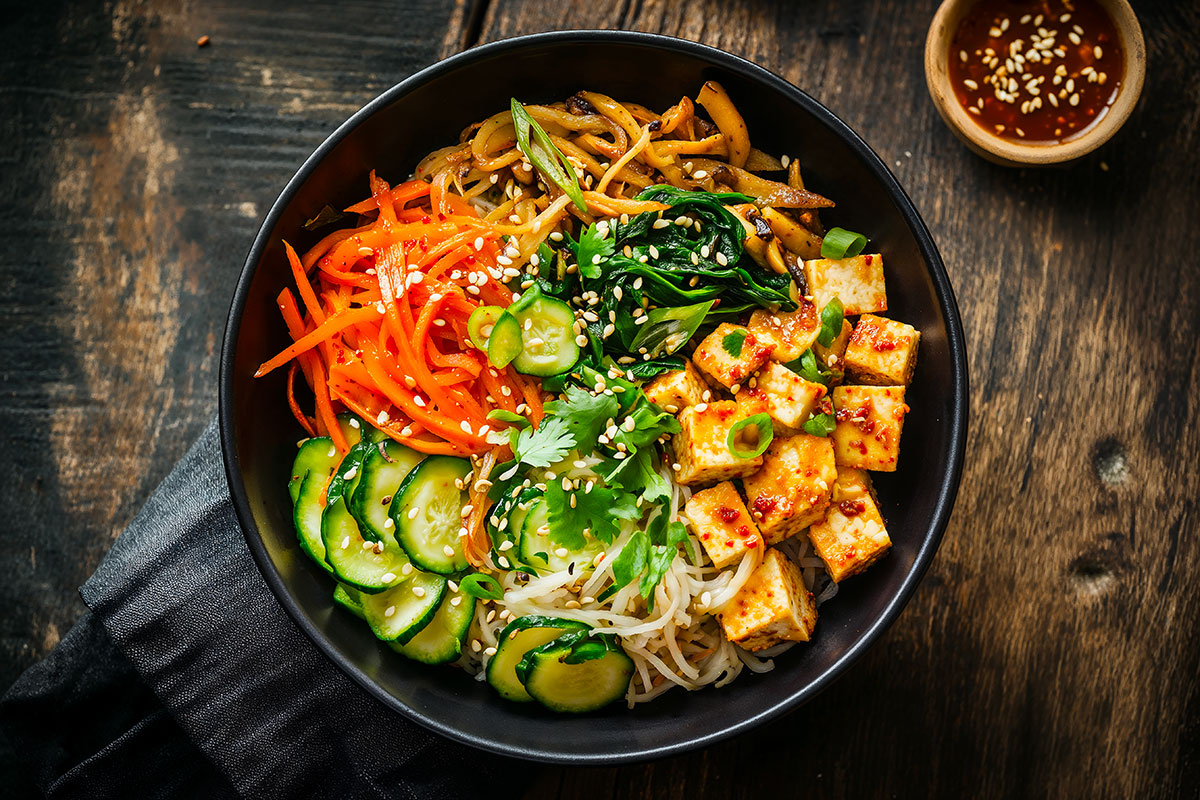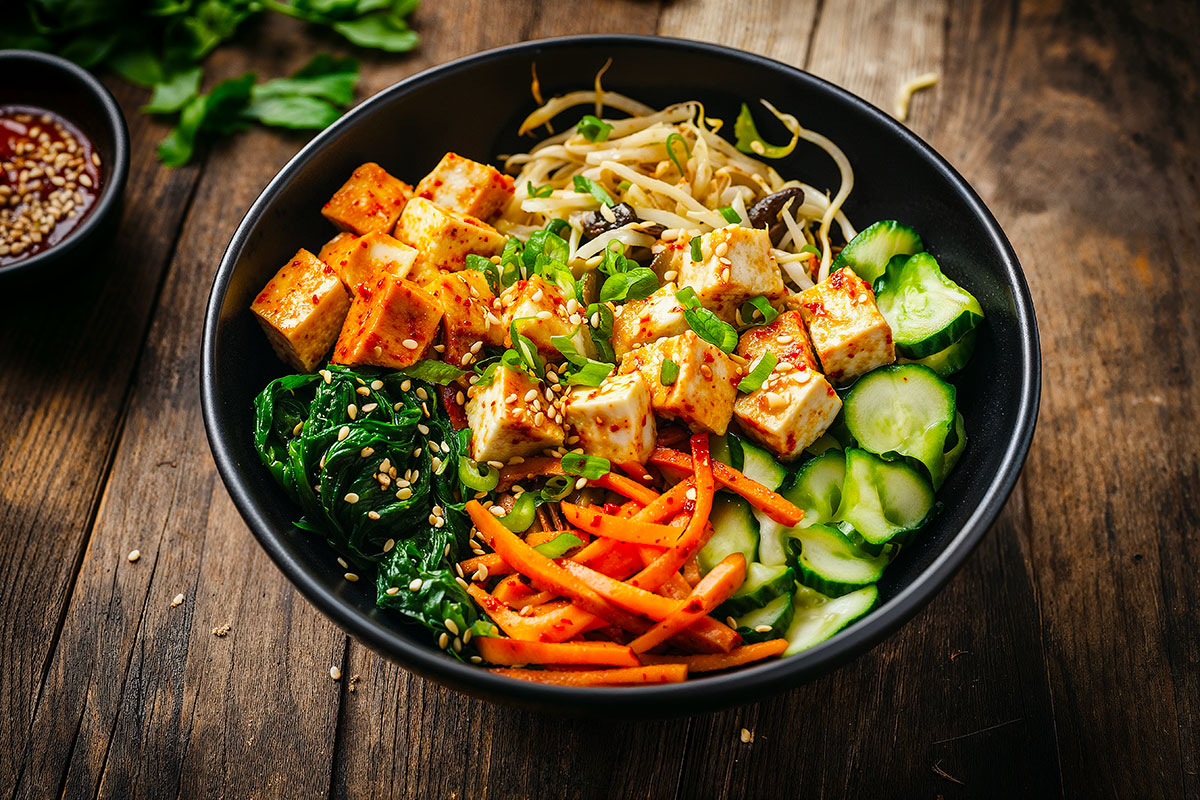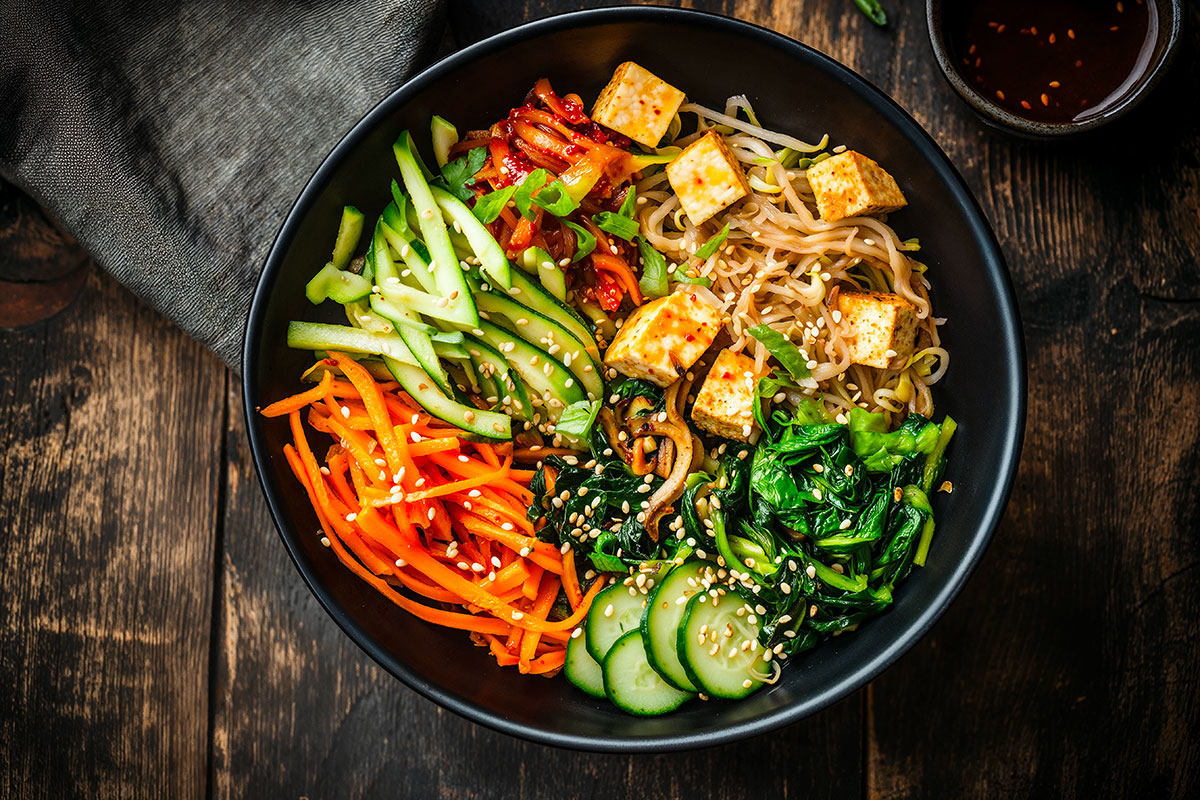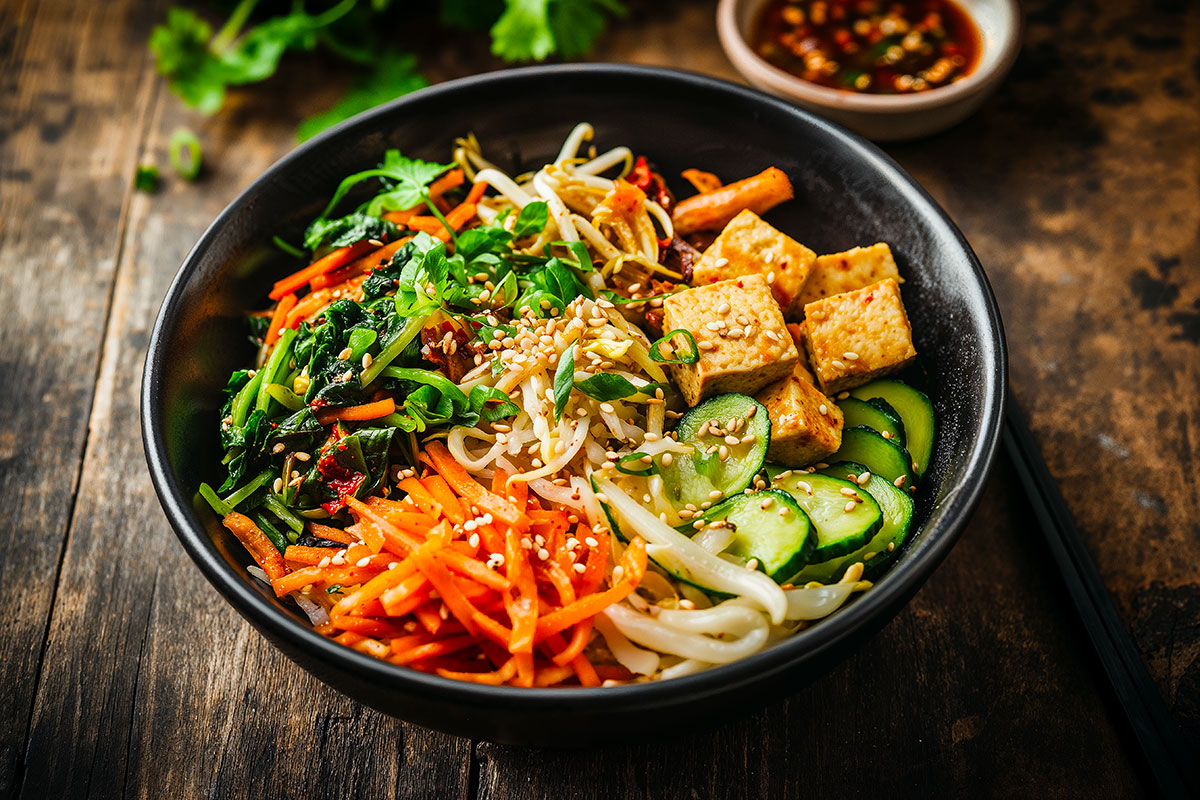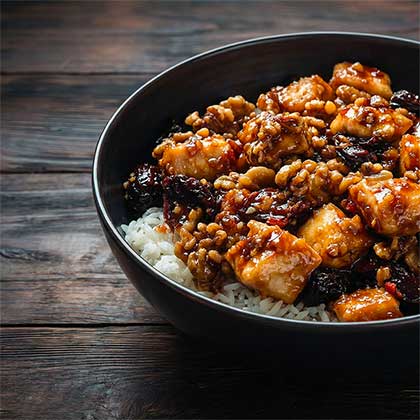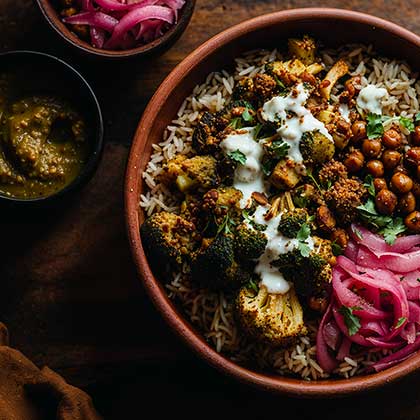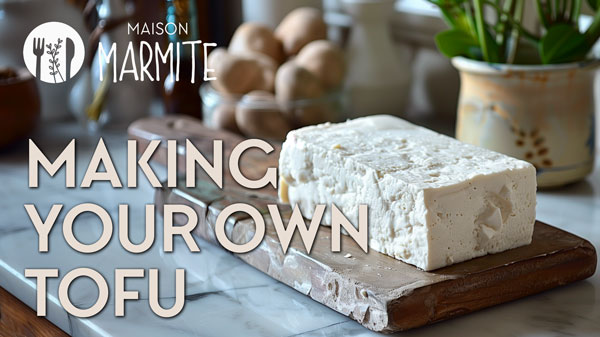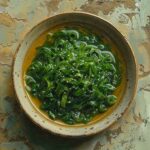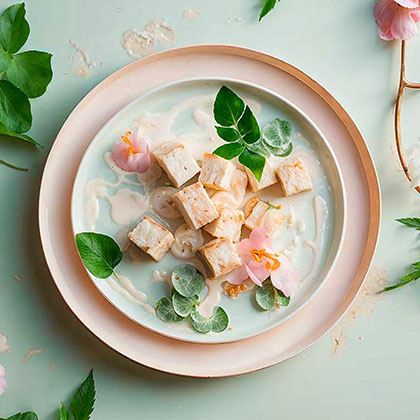Korean Bibimbap
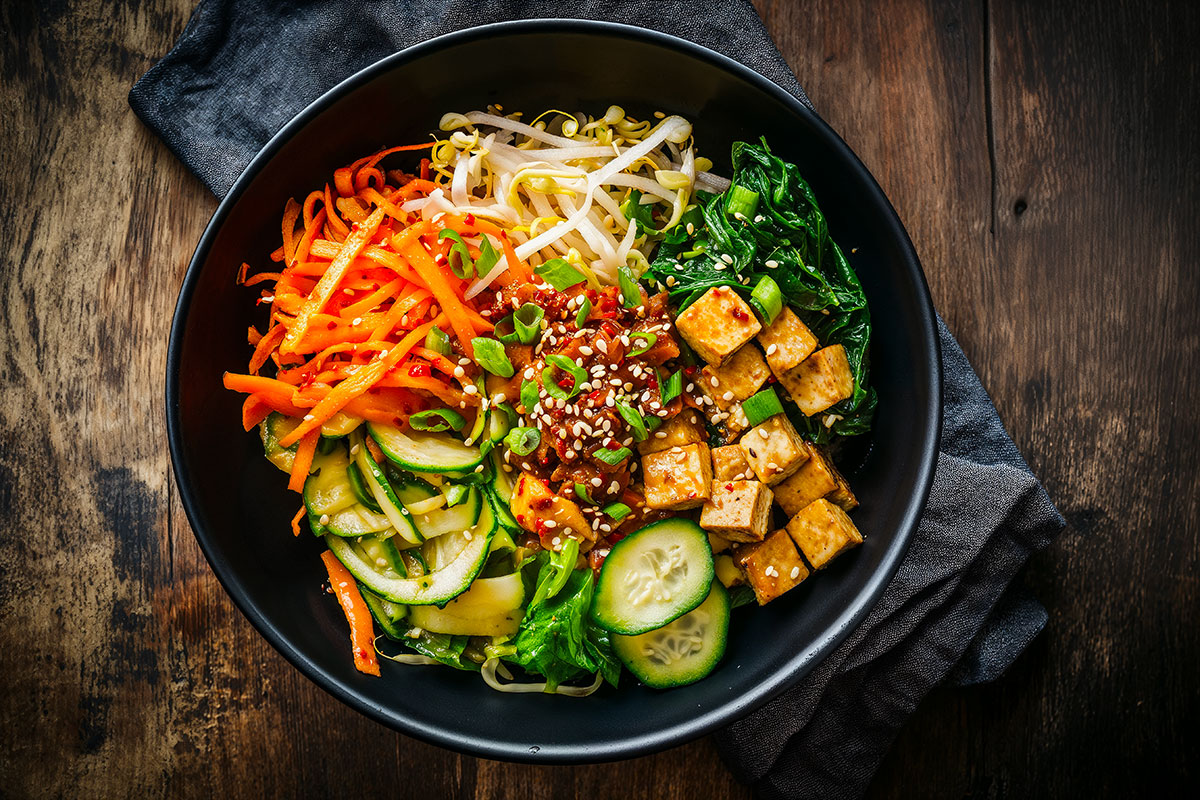
Cooking Time
Prep Time
Difficulty
Cuisine
Bibimbap is one of the most iconic dishes in Korean cuisine, loved for its balance between simplicity and rich flavors. Literally meaning “mixed rice,” it consists of a bowl of warm rice topped with various vegetables, proteins, and served with a spicy gochujang sauce. In Korea, Bibimbap is considered a complete meal, both nutritious and satisfying.
The origins of Bibimbap date back to the Joseon Dynasty (1392-1897). It was served during special occasions or ritual ceremonies where leftover food was consumed in a single dish, symbolizing harmony and balance. At that time, this meal helped avoid waste by combining various ingredients in one bowl. Today, it has become a staple in street food and family meals in Korea, perfectly representing the philosophy of Korean cuisine: simplicity, diversity, and harmony.
In the past, Bibimbap was also a favorite dish among Korean farmers who, after a long day working in the fields, would prepare this simple meal by mixing rice with leftover vegetables and side dishes from the previous day. The mix of flavors, combined with the spicy gochujang sauce, gave them the energy they needed to continue their efforts. Nowadays, the sweet and spicy flavor of gochujang sauce is what makes this dish unique, adding a deep layer of flavor.
The addition of tofu or tempeh, along with fresh and colorful vegetables, gives this dish a highly nutritious quality. Whether you’re a fan of Korean cuisine or looking to explore new culinary horizons, Bibimbap is a convivial dish, perfect for gathering around the table and sharing a meal full of textures and flavors.
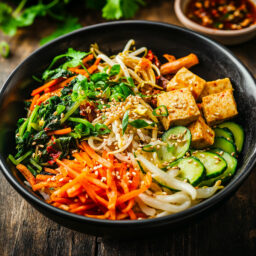
Korean Bibimbap
Ingredients
For the Bibimbap:
- 200 g sushi rice or short-grain rice cooked
- 200 g firm tofu diced
- 1 carrot julienned
- 1 zucchini julienned
- 100 g soybean sprouts or mung bean sprouts
- 100 g fresh spinach
- 100 g mushrooms shiitake or button mushrooms, sliced
- 100 g kimchi (ensure it's vegan)
- 2 tablespoons sesame oil for cooking
- 1 green onion chopped
- Toasted sesame seeds for garnish
To flavor the tofu:
- 1 tablespoon soy sauce (or tamari for a gluten-free version)
- 1 clove garlic minced
- 1 teaspoon fresh ginger grated
- 1 tablespoon sesame oil for cooking the tofu
- Chili powder or a few drops of gochujang sauce (optional)
For the Gochujang sauce:
- 2 tablespoons gochujang paste Korean chili paste
- 1 tablespoon soy sauce
- 1 tablespoon sesame oil
- 1 tablespoon rice vinegar
- 1 teaspoon coconut sugar or maple syrup
- 1 clove garlic minced
Instructions
Prepare the Gochujang Sauce:
- In a small bowl, mix all the sauce ingredients (gochujang paste, soy sauce, sesame oil, rice vinegar, coconut sugar, minced garlic) until you obtain a smooth consistency.
- Adjust the taste according to your spice tolerance and set aside.
Cook the Rice:
- Rinse the sushi rice several times under cold water until the water runs clear. Cook it according to the package instructions.
- Once cooked, let it rest covered until ready to serve.
Prepare the Flavored Tofu:
- In a pan, heat 1 tablespoon of sesame oil over medium heat. Add the diced tofu and sauté for 5 to 7 minutes until it's crispy on all sides.
- Once browned, add the soy sauce, minced garlic, and grated ginger. Mix well to coat the tofu with these flavors.
- If desired, add a pinch of chili powder or a few drops of gochujang sauce.
- Cook for another 2 to 3 minutes to develop the aromas. Remove from heat and set aside.
Cooking the Vegetables (one large pan or two pans)
Option 1: Using one large pan
- If you have a large enough pan, you can cook all the vegetables at the same time:
- Heat a little sesame oil in a large pan over medium heat.
- Add the carrots, soybean sprouts, mushrooms, and zucchini to the pan all at once. Stir-fry them for 5 to 6 minutes, stirring regularly so all the vegetables cook evenly.
- Adjust the cooking time if needed to get the desired texture (carrots and mushrooms take a bit longer, while soybean sprouts and zucchini cook more quickly).
- Once the vegetables are tender but still slightly crisp, remove them from the pan and set aside.
Option 2: Using two pans
- First pan: Heat a little sesame oil. First, sauté the carrots on one side of the pan, and two minutes later, add the soybean sprouts on the other side. Carrots take about 3 to 4 minutes, while the sprouts cook in 2 minutes. Once cooked, set aside.
- Second pan: Heat a little sesame oil. Sauté the mushrooms on one side of the pan, and 3 or 4 minutes later, add the zucchini on the other side. Zucchini takes about 3 to 4 minutes, while the mushrooms need a bit more time to brown. Once cooked, set aside.
Assemble the Bibimbap:
- In bowls, place the sushi rice at the base. Arrange the sautéed vegetables, flavored tofu, mushrooms, spinach, and kimchi over the rice in a harmonious way, keeping each ingredient visible.
- Add a few spoonfuls of Gochujang sauce on top or serve the sauce on the side so everyone can adjust to their taste.
Garnish and Serve:
- Sprinkle with toasted sesame seeds and chopped green onion. Serve immediately.
Notes:
- Variations: You can add other vegetables like radishes, cucumbers, or bell peppers to vary the flavors and textures.Additional Proteins: You can also add tempeh to vary the protein sources.
A recipe proposed by Maison Marmite



